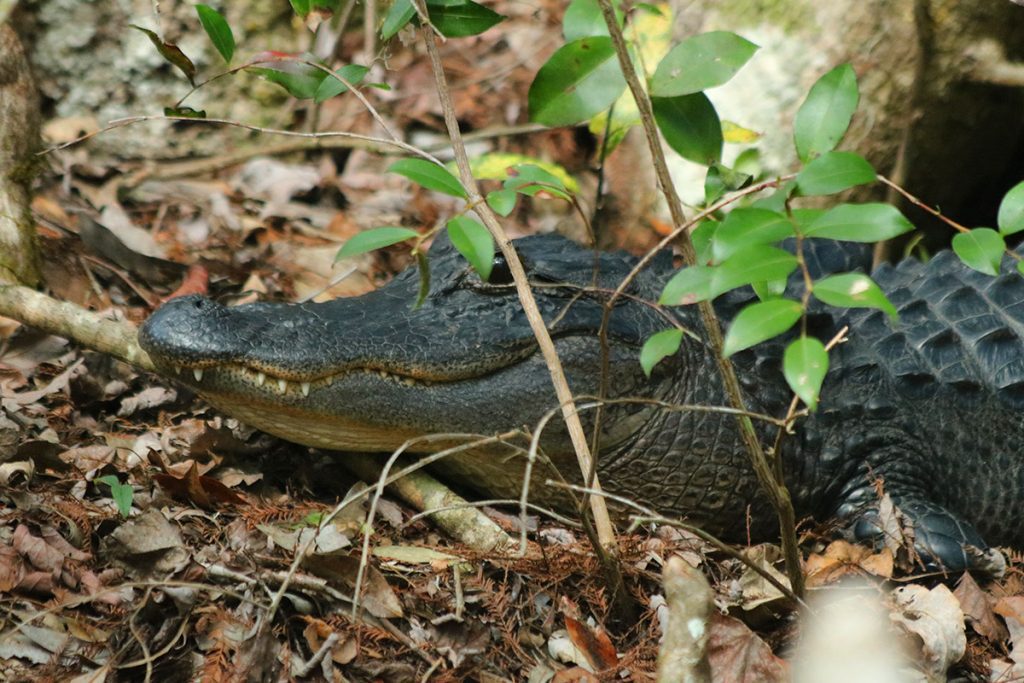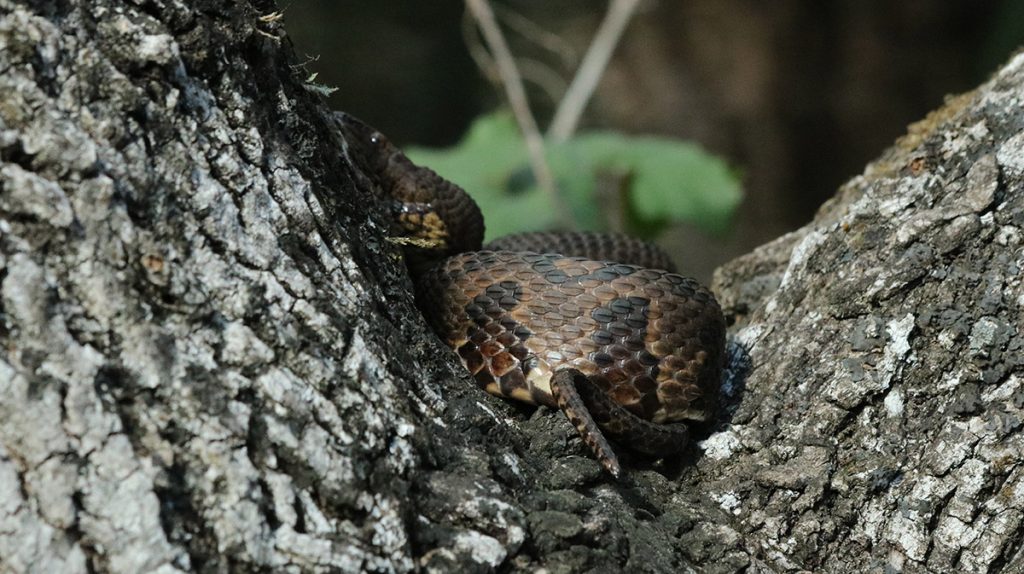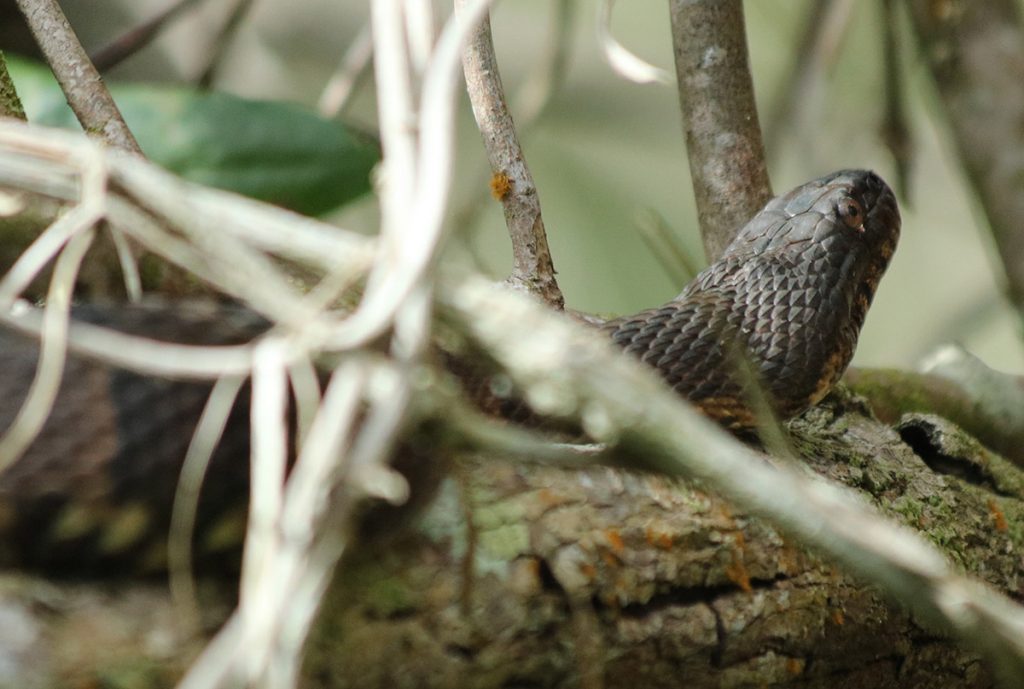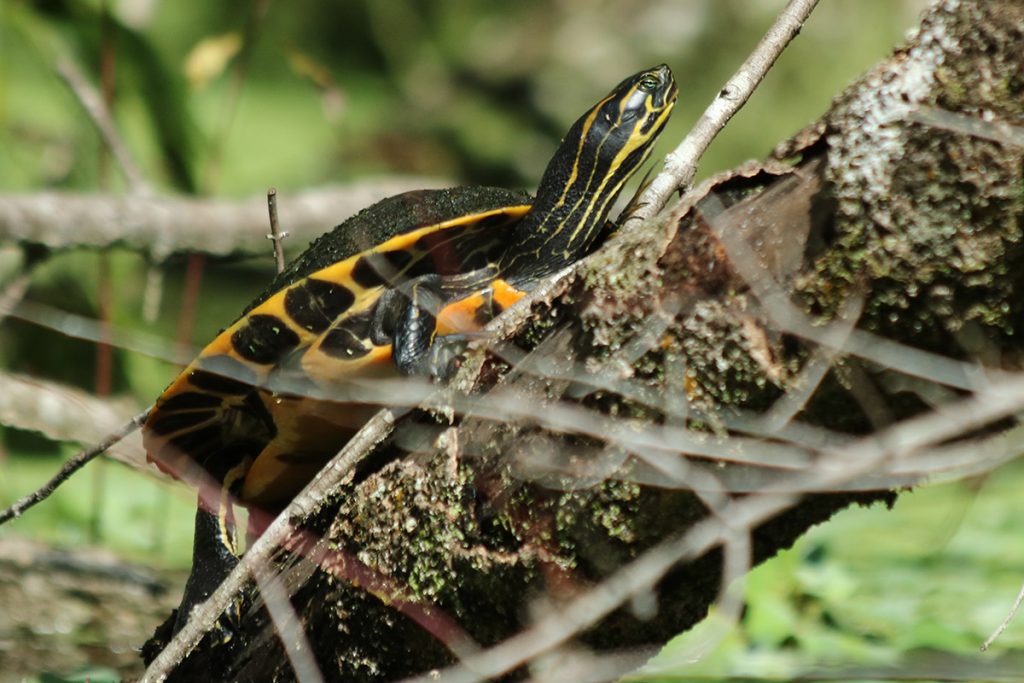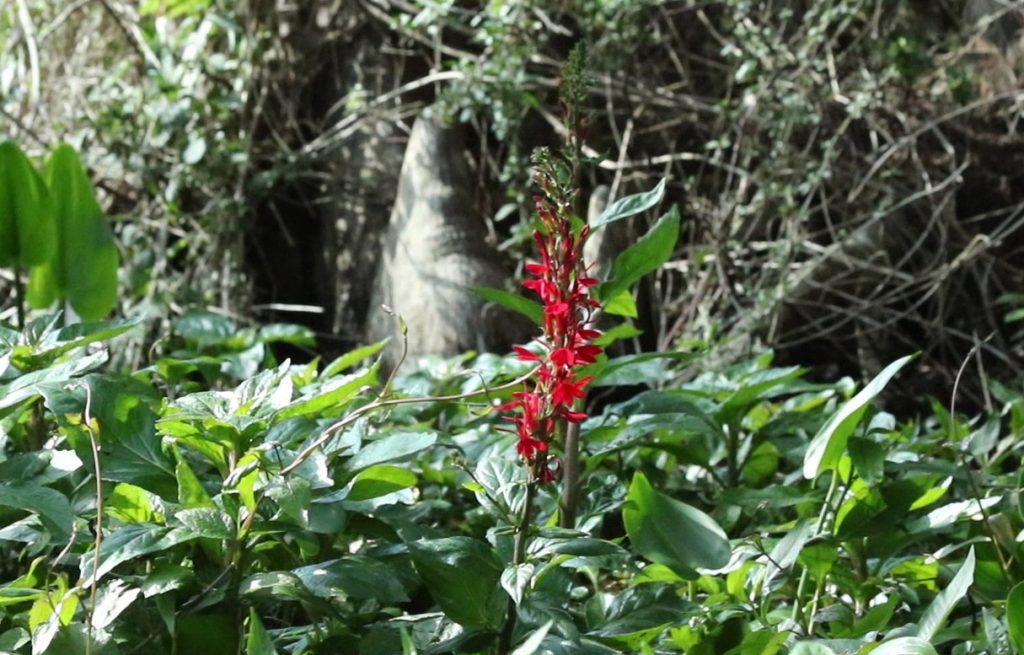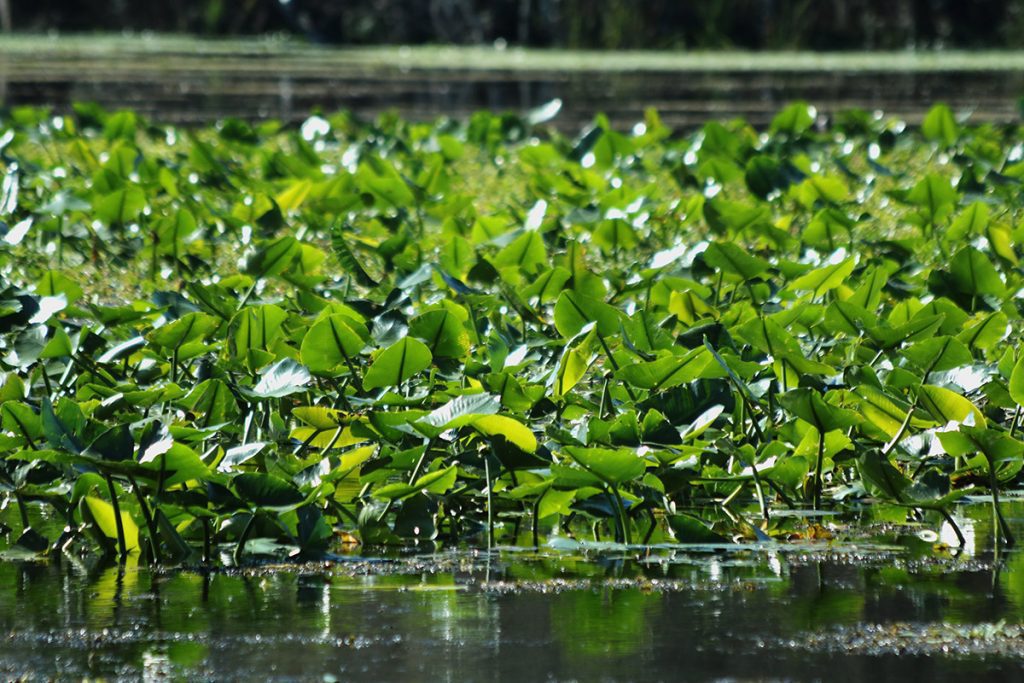Kick back and relax on a short trip down the Wacissa River. Recent rains had darkened the water on our shoot day, but wildlife was out in full force. This segment aired on the February 16 episode of Local Routes.
Music in the video was provided by Brian Bowen. Thanks to Brian, and to Dave Murphy of Winterstone Sound for providing instrumental versions of Brian’s songs.
Rob Diaz de Villegas WFSU Media
“If I had to come back to the same place over and over again, I would pick the Wacissa,” Harry Smith told us as we paddled back to the boat ramp. Harry is an outfitter based out of Tallahassee’s Railroad Square. We spent the day kayaking with him, his wife, and a few friends. Retired FWC biologist Michael Hill came along to get in some fishing and share his knowledge of aquatic flora and fauna.
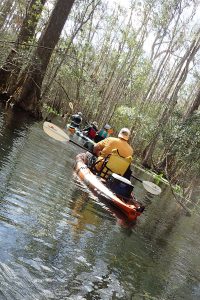 We put in at the headwaters of the river, in Wacissa Springs County Park. In the openness of the main river channel, a headwind pushed against us. A couple days earlier, a harsh storm tore through the southeast, and some wind persisted throughout the week. Luckily we were here to check out the river’s springs, which are tucked away in sheltered side channels.
We put in at the headwaters of the river, in Wacissa Springs County Park. In the openness of the main river channel, a headwind pushed against us. A couple days earlier, a harsh storm tore through the southeast, and some wind persisted throughout the week. Luckily we were here to check out the river’s springs, which are tucked away in sheltered side channels.
The rain had turned the water tannic and turbid, shifting our focus away from underwater photography. As you can see in the video above, we didn’t lack for things to see and do. The Wacissa bursts with wildlife. And, even in January, it wasn’t a bad day for a swim.
It didn’t take long to see why Harry picked this place for our outing. The Wacissa River is a favorite of many of my water loving friends, and for good reason.
Planning your Wacissa River Paddling Adventure
For one, you can plan a multitude of different trips on this river. Our trip focused on the many side channels towards the head of the river. But you can also choose to paddle ten miles from the headwaters to Goose Pasture. South of the Goose Pasture campground, the river breaks apart into several braids. One of these channels is the popular Slave Canal, which connects to the Aucilla River. You can tackle a headwaters to Aucilla trip in one 15 mile shot, or break it up and camp at Goose Pasture.
To plan your trip, consult the Wacissa River Paddling Trail Guide. Camping at Goose Pasture is free, but is on a first come, first served basis. Parties of six or more can make reservations.
When it’s warm, the water gets crowded on weekends. As Harry pointed out to us, people tend to congregate on Big Blue Spring while mostly leaving the other springs alone.
Wildlife on the Wacissa River
The Wacissa is also a reliable river for seeing wildlife. You can see alligators, snakes, and turtles the video:
Animals on the Wacissa are used to humans on the river, and so they tend to hide less when they hear you coming. A decent zoom lens will let you get closer shots without intruding on their space.
This is a brown water snake, as identified by Georgia Ackerman on the Local Routes Facebook page (and confirmed by Tall Timbers herpetologist Kim Sash). Our group had a good eye for snakes on branches.
I believe this is a banded water snake.
This is a yellow bellied slider. I had always had trouble differentiating between sliders and Suwannee cooters until last year’s Ochlockonee Bio-Blitz. There, Florida Fish and Wildlife biologist Pierson Hill (no relation to Michael) taught us to look for green spots below the neck. We learned a lot about wildlife on north Florida rivers that day.
Michael spotted this cardinal flower (Lobelia cardinalis) as we were leaving Big Blue Spring. The Wacissa River is heavily vegetated. In fact, it can sometimes make for slow paddling. Aquatic plants provide shelter for snails, crawfish, and fish. These feed the abundant wading birds and reptiles we see, as well as river otters. This unseasonable splash of color above is a threatened species.
A River with an Ancient Past
Our last story on this river took us under the surface and into the river bank. A team of archeologists donned scuba gear to excavate a site discovered by Ryan and Harley Means (the stars of our last two EcoAdventures!). Texas A&M PhD candidate Morgan Smith and his team found evidence of the Suwannee Culture, which is believed to have existed about 10,000 years ago.
The Aucilla/ Wacissa watershed is a hotbed of Paleolithic history. Last year, not far from where Slave Canal meets the Aucilla, a team led by Morgan’s faculty advisor made international news. Artifacts excavated at the Page-Ladson site were radiocarbon dated at 14,500 years old, earlier than humans were supposed to have been in the United States.
If you wondered what a “braided river” looks like, look at the map. The Wacissa is surrounded by protected land, and is one of Florida’s wildest rivers.

